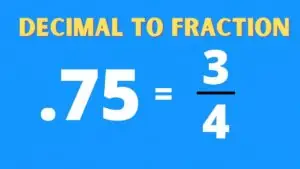Parentheses are fundamental symbols in mathematics, integral to various branches like algebra, calculus, and number theory. They establish a specific order of operations or precedence rules, and clarify complex mathematical expressions.
JOIN OUR LEARNING HUB
✅ AI Essay Writer ✅ AI Detector ✅ Plagchecker ✅ Paraphraser
✅ Summarizer ✅ Citation Generator
Introduction to Parentheses in Mathematics
Consider the expression:
2 + 3 * 5 = ?
According to the order of operations (BIDMAS/BODMAS), multiplication is performed before addition, leading to an answer of 17.
However, if we introduce parentheses, as in:
(2 + 3) * 5 = ?
In this case, the addition operation takes precedence, and the result is 25.
Parentheses in Functions and Expressions
In functions and complex mathematical expressions, parentheses are vital. They help identify dependent and independent variables, distinguish function names from multiplication, and express modifications in functions.
Consider the function:
f(x) = x^2
Here, x is the independent variable, and f(x) represents the dependent value for any x. In an expression like f(a+b), parentheses indicate that we should add ‘a’ and ‘b’ first before applying the function.
Parentheses in Intervals and Matrices
In intervals, parentheses indicate an open end, excluding the end number of an interval. For example, in the interval (2, 5), numbers greater than 2 and less than 5 are included, but not 2 and 5.
Parentheses also define matrices, a rectangular array of numbers, symbols, or expressions. Consider a 2×2 matrix, (a, b; c, d), where each row and column is enclosed within parentheses, indicating the boundaries of the matrix.
Congruence, GCD, and Parentheses
Parentheses define the modulo in congruence relations. For example, in the expression a ≡ b (mod m), parentheses denote the modulus.
When finding the Greatest Common Divisor (GCD), parentheses group terms in the Euclidean algorithm. Suppose we need to find the GCD of 48 and 18. We write GCD(48, 18) = 6, with parentheses grouping the two numbers.
Parentheses are invaluable in mathematics. Their wide-ranging applications contribute to the simplicity and clarity of mathematical processes. They streamline mathematical expressions, ensuring operations are conducted in the correct order. Mastering their use is fundamental in excelling in mathematical concepts from basic arithmetic to advanced number theory and calculus.
You can find more STEM Guides in our designated category here at A*Help!
FAQ
How do nested parentheses work in mathematical expressions?
Nested parentheses in mathematical expressions work by dictating an even more specific order of operations. When there are parentheses inside other parentheses, the most inner set gets solved first, then the next set outward, and so on. For instance, in the expression 3 * (2 + (1 * 4)), we first compute the operation in the most inner parentheses (1 * 4) to get 4, then the next outer parentheses (2 + 4) to get 6, and finally multiply by 3 for a total of 18.
In what situations are parentheses used to clarify order of operations?
Parentheses are used to clarify order of operations especially when the mathematical expression involves different types of operations such as addition, subtraction, multiplication, and division. They specify which operations should be performed first, regardless of the standard order of operations. For instance, in the equation 4 + 2 * 3, multiplication is performed first by default, resulting in 10. However, if we use parentheses like (4 + 2) * 3, the addition operation is performed first, leading to 18.
Can parentheses be used to represent intervals in mathematics?
Yes, parentheses can represent intervals in mathematics. In the context of intervals, parentheses are used to denote open ends, which means the end numbers are not included within the interval. For instance, the interval (3, 7) includes all real numbers greater than 3 and less than 7, but does not include 3 or 7 themselves.
What is the purpose of using large parentheses in mathematical notation?
Large parentheses in mathematical notation are often used to encompass large expressions or to denote specific mathematical objects such as matrices. For example, in the matrix notation, large parentheses enclose the rows and columns of the matrix. Large parentheses can also be used to clarify complex expressions, especially when smaller parentheses have been used within the expression.
How are parentheses used to enclose the variables of a function?
Parentheses are used to enclose the variables of a function to distinguish between the function name and the independent variable. The variable within the parentheses is the input into the function. For instance, in the function f(x) = x^2, the variable ‘x’ is enclosed in parentheses to signify that ‘x’ is the input variable of the function f.
What other mathematical concepts can parentheses be used to represent?
Aside from order of operations, grouping, functions, and intervals, parentheses can also represent several other mathematical concepts. In congruence relations, parentheses can be used to define the modulo. In calculating the Greatest Common Divisor (GCD), parentheses are used to group terms. In matrices, parentheses are used to demarcate the boundaries of the matrix. They can also be used in sets to distinguish elements or in algebraic expressions to group similar terms together.
Follow us on Reddit for more insights and updates.






Comments (0)
Welcome to A*Help comments!
We’re all about debate and discussion at A*Help.
We value the diverse opinions of users, so you may find points of view that you don’t agree with. And that’s cool. However, there are certain things we’re not OK with: attempts to manipulate our data in any way, for example, or the posting of discriminative, offensive, hateful, or disparaging material.